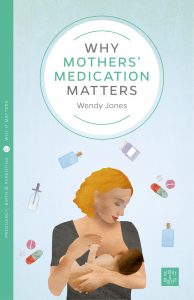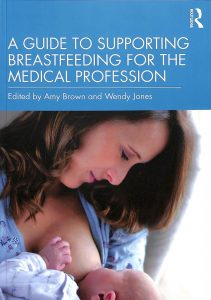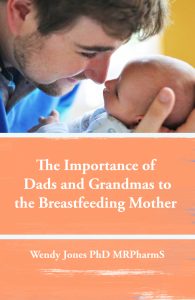THE HISTORY OF CHILD NUTRITON OVER THE PAST 200 YEARSTHE HISTORY OF CHILD NUTRITION OVER THE PAST 200 YEARS THE HISTORY OF CHILD NUTRITION OVER THE PAST 200 YEARS
Why do we no longer see Breastfeeding as the normal way to feed a baby? The answer lies in the historical “medical” literature and maternal manuals of the times.
In 1748 Cadogan declared his aim of introducing ‘a more reasonable, more natural method of nursing’ and repeatedly referred to ‘unerring Nature’ ‘Breastmilk is poured forth from an exuberant overflowing Urn, by a bountiful hand, that never provides sparingly. The Call of Nature should be waited for to feed it with anything more substantial, and the Appetite ever precede the Food….. Thus far Nature, if she be not interrupted will do the whole business perfectly well…’ However in his advice for the foundling hospitals, Cadogan suggested that 4 feeds per day (decreasing to 2-3 per day at three months) were sufficient to nourish any baby. Our current knowledge would suggest this would rapidly lead to a reduction in milk supply.
However there were some who supported breastfeeding. In 1812 Buchan thought that the child should be ‘given freely what nature freely produces’ and Cobbett said ‘Of all the sights that this world affords, the most delightful is a mother with her clean fat baby lugging at her breast, leaving off now and then and smiling, and she half smothering it with kisses’.
There were others who thought breastfeeding was not adequate to nourish infants. Lydia Child in 1831 raised doubts on the quality of breastmilk suggesting that “ mother’s milk might appear plentiful but have no nutritional value. Dr Pritchard believed that “lactation is far more likely to go wrong in a woman than a teetotal, vegetarian, nerveless cow” and advocated a restricted lifestyle with a bland diet, rest and no sexual emotion to spoil the quality of milk. How many of these beliefs persist? There are many old wives tales dictating what a breastfeeding mother may eat if she is too avoid colic in her baby or otherwise taint her milk.
Harland wrote in his book Common Sense in the Nursery, “ a hundred years ago it was rare not to feed one’s baby oneself. Failure to do so was mentioned as a misfortune, in the same category as a disease. Now custom, inherited weakness, perhaps the result of excessive labour or imprudence on the part of the foremothers and perhaps climatic influence has changed this in great measure. The query “how do you feed him is conventional. The answer no longer involves the child’s chance of strength and life”
In the same year Mrs. Panton wrote “let no mother condemn herself to be a common or ordinary “cow” unless she has a real desire to nurse. Women have not the stamina they once possessed and I know of no greater misery than nursing a child…” Is this the origin of the concept that women may not be able to produce enough milk?
Although Dr Bull promoted breastfeeding, stating that the mother who breast-fed was physically fitter, more attractive, less likely to get pregnant, suffer from milk fever or cancer of the breast. However, his enthusiasm was accompanied by well-meaning attempts to ‘manage’ the feeding by the introduction of pre-lacteal feeds and the restriction of demand nursing. ‘From the first moment the infant is applied to the breast, it must be nursed upon a certain plan. The baby must take a thin gruel, or a mixture of one-third water and two-thirds cow’s milk, sweetened with loaf sugar until the breast-milk is fully established.’ After a week of demand feeding ‘it is essentially necessary to nurse the infant at regular intervals of 3 or 4 hours day and night’
As the 19th century progressed, despite the increasing exhortations and encouragement to breastfeed, the rising influence of science and rationalisation of the world, led to increasing attempts to ‘manage’ feeding. There was much debate. Methodism was very in favour of breastfeeding and had become a major social force from the late eighteenth century
In the 1890s Dr Rotch of Harvard University developed a technique of diluting cow’s milk formula (to reduce casein content) adding cream (to increase fat content) and sugar or honey (for sweetness) in an attempt to replicate the nutritional balance and digestibility of human milk. This formula gained popularity by 1907. The percentages were varied according to the individual child’s needs. Rotch established laboratories in which to prepare the modified cow’s milk and deliver the formula to the parent.
In the late nineteenth century infant morbidity and mortality due to lack of breastmilk and the use of unsafe substitutes became an issue of public health. Four public health nurses were first introduced in Birmingham in 1899 with instructions to;
“carry with them disinfectant powder and use it where required, to direct the attention of those they visit to the evil of bad smells, want of fresh air and dirty conditions of all kinds: to give hints to mothers on the feeding of their children and to use their influence to induce them to send their children to school”
St Pancras School for Mothers was set up in 1907. At the clinic babies could be weighed and examined by a doctor free of charge. Breastfeeding was recommended to the lower social classes who probably could neither afford nor understand the complexity of individual formula preparation. The centre also gave free dinners to breastfeeding women on the premise that lactating mothers needed nutrition but that they were less likely to prioritise their own needs for food.
In 1907 Dr Pierre Budin a French Obstetrician showed that volumes of breastmilk produced could be dramatically increased by additional feeding. He studied a wet nurse who produced 700ml when suckling one infant but within four days the volume increased to 1750ml when she suckled five. Wood and Walker-Smith also reported that a royal household wet nurse was still producing lavish amounts of milk thirty years after the birth of her last child. (1)
Budin first developed the concept of well baby clinics and preventative health measures. He recognised that the main reason that infants died from gastro-enteritis was contaminated cow’s milk. (2).
However formula-fed babies exhibited more diet-associated medical problems, such as scurvy and rickets than breastfed babies did, so orange juice and cod liver oil was added to home-made formulas. Companies attempted to maintain professional approval by making it difficult for mothers to buy commercially prepared formulae without doctor’s prescriptions. For instance instructions were removed from the labels so mothers needed directions from the doctor. Many would have been unable to afford such visits but continued to use the formula anyway. In 1915 Simulated Milk Adaptation (SMA) was launched and promoted to doctors only. It contained a blend of animal and vegetable fats rather than milk fats. Other variations were developed in the succeeding years replacing formulae based on evaporated cow’s milk.
In 1918 legislation on maternity and child welfare provided for clinics. Mothers were monitored throughout pregnancy and their children routinely seen to the age of five. Health visitors became a routine part of the healthcare system with charts of milestones to be reached by babies and weight charts to be filled in. This was the forerunner of the English healthcare system for mothers and babies, which has changed little over the years. Women attended for weight monitoring and to receive information and advice on infant feeding, weaning, vaccinations and many other aspects of child health. Formula fed babies tended to gain weight more rapidly and in the new era of measuring and record keeping, were judged to be thriving. Bonny babies were seen as a credit to their parents, a view promoted by manufacturers in their adverts.
From 1930 to the 1960s breastfeeding declined although most received neither breast nor formula by 4-6 months of age producing a high incidence of anaemia. Data is hard to derive but Fomon (3) reports studies that indicate that from 1931 to 1935,more than 70% of first-born infants were initially breast-fed and 40% of infants were breast-fed for at least 6 months. By 1946–1950, initial breast-feeding of first-born infants had decreased to 50% and only 20% were breast-fed for at least 6 months. A survey of hospitals carried out in 1945 indicated that 69% of infants discharged 7 days after birth were breast-fed and 60% if discharged more than 7 days after birth were breast-fed. However by the early 1970s only about 25% were initially breastfed and by 2 to 3 months no more than 14% continued, the remainder were fed a form of formula which was replaced by cow’s milk at 4-6 months of age.
Breastfeeding in western cultures is now a learned skill rather than an instinct. Frossell (4.) commented that many women ‘hope’ to breastfeed but expect failure. The expertise of health professionals in helping mothers to initiate breastfeeding is inextricably linked with success or failure. However, apparently inconsequential throw away remarks by others especially GPs and pharmacists can set doubts in a mother’s mind as to whether she is nurturing her baby adequately. Garforth (5) pointed out that:
“It is possible that the very people who claim to be promoting breastfeeding may actually have a negative influence on its success.”
Frossell (4) commented that there is little consideration given to the emotional reaction of professionals to breastfeeding. Some may have encountered personal difficulties but have little or no opportunity to discuss or debrief their own feelings and prejudices. Professionals may know the up to date information on the health aspects of breastfeeding but unwittingly deliver it in a negative manner giving the mother mixed and confusing messages.
To some extent the attitude towards breastfeeding mirrors society’s attitude towards children. For example, in the 1930s Truby King (6) advocated four hourly feeds with the baby placed in a pram in the garden to teach it self-sufficiency and discipline.
His daughter Mary in her handbook “Mothercraft” described a real Truby King baby;
“ A real Truby King baby is completely breastfed till the ninth month and then slowly weaned onto humanised milk, with gradual introduction to solid foods… Truby King babies are fed four hourly from birth, with few exceptions, and they do not have any night feeds. A Truby King baby has as much fresh air and sunshine as possible and the right amount of sleep. His education begins from the very first week, good habits are established which remain all his life.
The mother of such a baby is not over worked or worried, simply because she knows that by following the laws of nature, combined with common sense, baby will not do otherwise than thrive.”
Whilst the 1980s re-introduced the concept of baby-led feeding schedules and
bed sharing. Dr Benjamin Spock (7) felt that mothers knew the needs of their babies best and that separation was unnatural and unnecessary and led the advocacy of feeding on demand in the 1950s.
However Spock was in part undermined by the new scientific formulas and in the “age of science”, that which could be made to a consistent recipe, could be analyzed and measures was considered to be better. Cow and Gate in the 1970s ran an advertising campaign saying “our formula is always the same as breastmilk – but which breastmilk?” with photographs below of several test tubes of varying volume and consistency suggesting that some were inadequate in comparison to the “idealised formula”.
In the latter part of the twentieth century body image has become all-important in the western culture. McConville (8) claims that breasts have become a focus for erotic attention in western cultures. Price (9) notes that the physiological changes which occur in relation to lactation may distress the mother and lead her to abandon breastfeeding in order to regain control of her body. Leakage of breastmilk onto clothing may lead to negative perceptions of breastmilk. Debretts’ Guide to Etiquette and Modern Manners (10) advised that the breastfeeding of an infant within a dining area is the height of bad manners. Breastfeeding is compared to the excretion of any bodily fluid, and thus an activity to be restricted to strictly private areas.
As fewer women chose to breastfeed, health care professionals who had grown up in a society who saw artificial feeding as equivalent to breastfeeding, emerged. Infant feeding began to be perceived as a lifestyle choice which women could make, freeing them to return to work, retain social freedom and otherwise continue their lives without the constant need to be near their baby in order to satisfy its hunger. The changes coincided with a rise in the interest in scientific research – what could be measured and analysed was seen as superior to natural “uncontrolled” products.
Several studies have suggested that health professionals have little influence on a woman’s decision relating to infant feeding. However, Jamieson (11) asserts that a tentative breastfeeding mother faced with a professional lacking in skills and encouragement will almost inevitably fail. The rigid rules and medicalisation of breastfeeding have created many breastfeeding problems in the past 20 years. Fisher (12) suggests that any management of breastfeeding should be justified by evidence based research and that breastfeeding should be seen as the physiological norm.
Welford (13) and Dykes (14) stated that attitudes of midwives to breastfeeding are as wide as those in the general population and may be conveyed non- verbally. This could also be said to be true of all healthcare professionals.
Chloe Fisher, author, senior midwife and lactation advisor at the breastfeeding clinic at Oxford (15) suggests that 60% of women who “fail” to breastfeed have suffered mismanagement by health professionals. She is quoted (16) as saying:
“The history of what has happened in breastfeeding is mind blowing. Men invented rules for breastfeeding, with no clue of how the process works. The art of breastfeeding has been all but lost. Most of the information women are now given is complete poppycock, based on the teaching at the turn of the century, which supposed the breast was a bottle. Health Professionals don’t realise how desperately the women in their care need information and support.”
However, research is now becoming increasingly clear that artificial milk is not the same as human breastmilk. Although it is nutritionally sufficient, health sequalae from its use are being recognised.
The commercial needs of the manufacturers continue to drive development of “improved” and specialised formula, marketed to healthcare professionals as fulfilling a need for their clientele. The advertisement of formula for infants under four months of age (defined as breastmilk substitutes) directly to mothers and carers is banned under “The infant formula and follow-on formula regulations”. However the companies are permitted to advertise so called follow- on formulas – to be introduced after four months of age and to offer help lines allowing contact with mothers. An increasing number of specialised formulas continue to be developed aimed at healthcare professionals. The evidence of benefit of these products is however hard to determine.
References
- Wood C, Walker-Smith J MacKeith’s Infant feeding and feeding difficulties Churchill Livingstone 1981
- Toubas PL Dr Pierre Budin: Promoter of Breastfeeding in 19th Century France. Breastfeeding Medicine 2007;2(1):45-49
- Fomon SJ Infant Feeding in the 20th Century: Formula and Beikost. Journal of Nutrition. 2001;131:409S-420S
- S Frossell. If Breast is Best then what is the problem? Br. J. of Midwifery 1998;6(5):316-9
- Garforth S Garcia J., Breastfeeding Policies in Practice – no wonder they get confused . Midwifery 1989 ; 5(2):75-83.
- Truby King M. Mothercraft. Whitcomb and Tombs. Melbourne 1938
- Spock B. Dr Spock’s Baby and Child Care ; Simon and Schuster, London 1946
- McConville B. Mixed Messages; Our breasts in our lives. London 1994
- Price Altered body image in pregnancy. Br. J. Midwifery 1996; 1(3):142-146
- Morgan J. Debretts’ new guide to etiquette and modern Manners. August 1999
- Jamieson L. Educating for successful breastfeeding; Br. J. Midwifery 1995;3(10):535-539
- Fisher C. How did we go wrong with breast feeding? Midwifery 1985;1:48-51
- Welford Breastfeeding; Promoting good practice ; Modern Midwife 1995; 5(11):29-30
- Dykes Valuing breastfeeding in midwifery education . Br J Midwifery 1995;3(10): 544-7
- personal communication
- McConville B. Mixed Messages; Our breasts in our lives. Penguin London 1994
Bibliography the history of child nutrition
Christina Hardyment . Perfect Parents: Baby-care Advice from Past to Present. Oxford Paperbacks 2nd Ed 1995
Minchin M. Breastfeeding Matters: What We Need to Know About Infant Feeding . Unwin Hyman 1985




